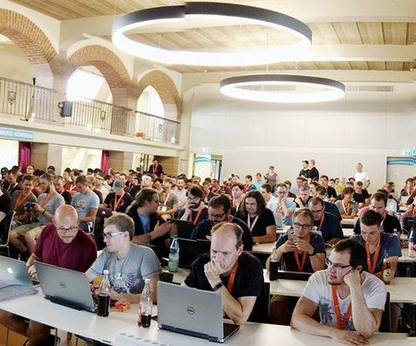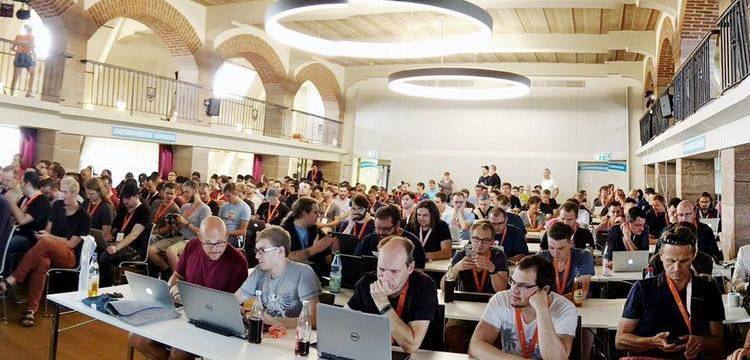First, let’s clearly define digital transformation
The task of defining this term is not easy. It is a concept so broad, that the definition often feels vague. And “digital transformation” is at its most useful during a game of buzzword bingo with your colleagues.
Wikipedia’s (not so good) definition
Digital Transformation is not necessarily about digital technology, but about the fact that technology, which is digital, allows people to solve their traditional problems.
Hmm, sounds pretty wooly to us.
A better definition found on Quora
Digital Transformation is the profound transformation of business and organizational activities, processes, competencies, and models to fully leverage the changes and opportunities of a mix of digital technologies and their accelerating impact across society in a strategic and prioritized way, with present and future shifts in mind.
Let’s imagine how this would apply to the real world. Taking this fictional example:
Before digital transformation
Steve remembers he is in need of a haircut. He grabs his phone and calls his favorite local hairdresser, who answers the phone, and checks his appointment book for an available spot. Next Saturday at 9am, Steve will go downtown to get his new look.
After digital transformation
Steves adds a reminder on his phone to get a new haircut. The system automatically detects a convenient time and location. And that is right now! Steve is walking down a street close to his favorite hairdresser and has no other pending plans across his scheduling apps. The phone system checks the hairdresser’s calendar. A spot is free. A notification informs Steve that he has an appointment.
And we are almost there. Google Assistant is almost ready to book your next hair appointment for you:
In this second scenario, neither the hairdresser nor Steve spends any time arranging a meeting. Freeing up (precious) time and resources spent on trivial tasks are often the gains we are trying to achieve with digital transformation.
But we could go one step further.
After the transformation: futuristic scenario
Steve’s smartwatch decides it is time for a new haircut. The AI predicted he might have a job interview tomorrow. The robot hairdresser company sends his robot to Steve’s house. The robot can propose a few customized haircuts before performing his magic.
The role of a digital transformation consultant, in this case, would be to help the hairdresser transform his local business into a fully automated robot business. Of course, this example is far fetched and not very realistic at the moment. But it’s coming!
Why transform digitally?
The Benefits of Digital Transformation
If you invest a significant amount of time and budget, you want ROI. Some of the benefits that can provide this include:
- Efficiency: Processes and decisions are streamlined
- Productivity: Automated tasks free up workers time
- Insights: Automated processes generate new data which wasn’t there before and can be used to improve them even more
- Customer service: Global customers never sleep, and an automated process can always be there to respond to their needs
- Competitive advantage: if you are faster, more productive and have data to give you a competitive edge, chances are you’ll beat the competition.
- More interesting tasks: Repetitive tasks are automated, leaving the workforce open to more creative challenges
But, it’s not all shiny and perfect.
Digital transformation is often associated with fewer jobs. Machines replacing human labor is a controversial topic that not everyone is on board with.
And it might be instead of disappearing, that the jobs will actually just shift. Then, a major challenge will be to re-skill people to fit the labor needs. Check out this interesting report by the World Economic Forum on the topic.
What does a digital transformation consultant do?
A digital transformation consultant or consulting company’s role is to help an organization identify ways to become more profitable by implementing strategic changes with the help of technology.
How do we do this at Web Essentials?
- Assess the customer’s current position & needs: What aspects of the business can gain from technology? How can we help the customer to secure a sustainable future?
- Develop client strategies around digital solutions: Where and which technologies could be used to enter a new market or to outperform the competition?
- Assist in the development of business cases for new digital transformation projects: Convincing coworkers to change the way they have always done things can be a challenge. Effective change management is key.
- Analysis and design of key user journeys: At which step cloud we use automation or provide additional service to the user?
- Help during the implementation.
Real life examples we worked on
Let's get back to reality with projects we did provide digital transformation consulting services for:
Increase efficiency and transparency
For a local government, we developed an eVoting system that permits real-time display of the results. With such a system we were able to reduce the resources needed to gather, analyze and publish the results.
Connect vendors to leads
We partnered with an exhibition solutions company to create LeadScan, an app that digitalizes the traditional business card transaction. The exhibitor can quickly scan the visitor’s badge at their booth to collect their ticket data, and add notes, tags and follow up actions. The lead is processed faster, and gets the information they need quicker thanks to the digital process.
Reduce administrative overhead
For Swisscom, we created event management software that uses technology to connect people with shared interests within the enterprise. We made it possible for people to set up their own events, formed an online community and reduced administrative overhead as admins could approve events instead of having to set up each event individually themselves. The result was a decrease in the amount of team members needed to organize events from 8 to 2. Over time, this generates clear ROI on the product.
What would you do with the resources that were freed up?
The time is now!
Digital Transformation can be scary, vague or overwhelming. But small steps in the right direction are already a good start. We would love to accompany you on this journey.
Ready to future-proof your business or department with the help of technology? Talk to us today!





